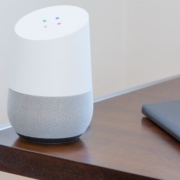Throughout our ten years of working with equipment manufacturers to connect, collect, and integrate operational data with enterprise systems, we’ve seen many trends impacting industrial IoT project success. The world has finally moved beyond most of the technological limitations for building innovative solutions. All the necessary tools exist to create connected product systems that perform as expected. They work. Now there’s a new trend, and it’s not a good one. We’re seeing business teams at equipment manufacturers telling engineering managers and IT leaders to evaluate and choose an IoT platform for the company. Run an online demo. Read API documentation. Build a proof of concept. Compare prices. Most of these projects never see the commercial light of day. They get stuck. Why? They get stuck because this approach to digital transformation is completely backward.
Evaluating the IoT Platform Problem
We’ve said technology isn’t the problem. Here’s the reality. The right technology for your system is available today. When used correctly by experienced teams, it will produce your desired outcomes. This is a well-charted territory. You can have remote monitoring with predictive maintenance and integrate machine data with your business workflows. These are solved challenges.










